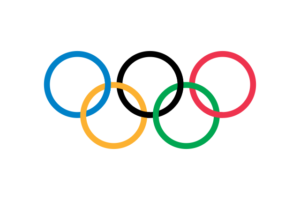 Next year, Paris will host the Summer Olympics. The location is fitting given that Paris was also the host city for the Olympics one century earlier, hosting the 1924 games. A hundred years apart, these two games will probably look very different, even if you look at the events. For example, the 1924 games did not include volleyball, archery, triathlon, badminton, or rhythmic gymnastics. Meanwhile, the upcoming Paris games will not be featuring polo. But the 2024 Olympics will also be missing something that for decades was just as much a part of the Olympics as diving, wrestling, and weightlifting: painting.
Next year, Paris will host the Summer Olympics. The location is fitting given that Paris was also the host city for the Olympics one century earlier, hosting the 1924 games. A hundred years apart, these two games will probably look very different, even if you look at the events. For example, the 1924 games did not include volleyball, archery, triathlon, badminton, or rhythmic gymnastics. Meanwhile, the upcoming Paris games will not be featuring polo. But the 2024 Olympics will also be missing something that for decades was just as much a part of the Olympics as diving, wrestling, and weightlifting: painting.
Between 1912 and 1948, the Olympic Games held competitions and awarded medals for art. Artists worldwide could compete for medals in architecture, music, painting, sculpture, literature, and other categories. Baron Pierre de Coubertin, the founder of the modern Olympics, tried to include art competitions from the very beginning. He stated that in the ancient games, “sport exhibitions walked in equality with artistic exhibitions,” which sets the Olympics apart from other sporting events. The one rule was that the works’ subjects had to be related to sports and athletics. Architects submitted plans for arenas and stadiums, composers wrote marches of victory for the medalists, and sculptors created works reminiscent of Myron’s ancient athletic statues.
The art competitions were somewhat controversial. Many artists at the time simply ignored or flat-out refused to submit their work to the Olympic juries, primarily because they disliked viewing art as a competition. Similar to some of the grievances French modernists had regarding the academic Salon, some believed that the Olympic judges could be viewed as the new tastemakers. This was particularly upsetting for them since most of the judges lacked an artistic background. However, many artists were happy to submit their work. One of the most prolific artists who participated in the Olympics multiple times was the British sporting artist Alfred Munnings. Though he never won any medals, Munnings submitted paintings for the 1928 Amsterdam Games, the 1932 Los Angeles Games, and the 1948 London Games. Participating artists at the Amsterdam games also included Childe Hassam and George Grosz. At the Los Angeles games, great American artists like George Bellows, Thomas Eakins, and Winslow Homer had work on display. However, these artists had died 7, 16, and 22 years before, respectively; their works exhibited hors concours, meaning they were not submitted for the competition.
The International Olympic Committee decided not to continue the art competitions for the 1952 games in Helsinki, but not for the reason you would expect. Of course, nowadays, we might hear of the Olympic art competitions and think Oh, how silly they were, everyone knows art isn’t a sport. But the art competitions were discontinued because of a rule that has been done away with: the Olympics were meant for competitions among amateurs. They determined that many of these artists were professionals, so it would be improper for them to compete. One fascinating example of this is Alfréd Hajós, an example of the kind of amateurism the Olympics originally encouraged. Hajós won gold medals in swimming at the first modern Olympics held in Athens in 1896. But, of course, he was not a professional swimmer; rather he was an architect. He became one of only two Olympians to win medals in both sports and art when he won a silver medal for his designs for a stadium at the 1924 Paris Games.
After the end of the art competitions, the one hundred fifty-one medals awarded for the arts during the Olympics were stricken from the record, and they no longer count towards their countries’ totals. But even if only a small handful of artists were ever recognized with medals, that does not mean they go completely unrecognized today. The last recipient of an Olympic gold medal for painting was the British artist Alfred Thomson. He had previously worked as a commercial artist, designing posters and advertisements. Then, when war broke out in 1939, he worked as a war artist with the Royal Air Force. He won the gold at the 1948 London Olympics with The London Amateur Boxing Championship. Over six decades later, the painting sold at Christie’s London for £60K hammer, or 7.5 times the £8K high estimate. That painting is still Thomson’s auction record. Though they may not be giving out medals for paintings anymore, the arts remain and fundamental component of the Olympics.
